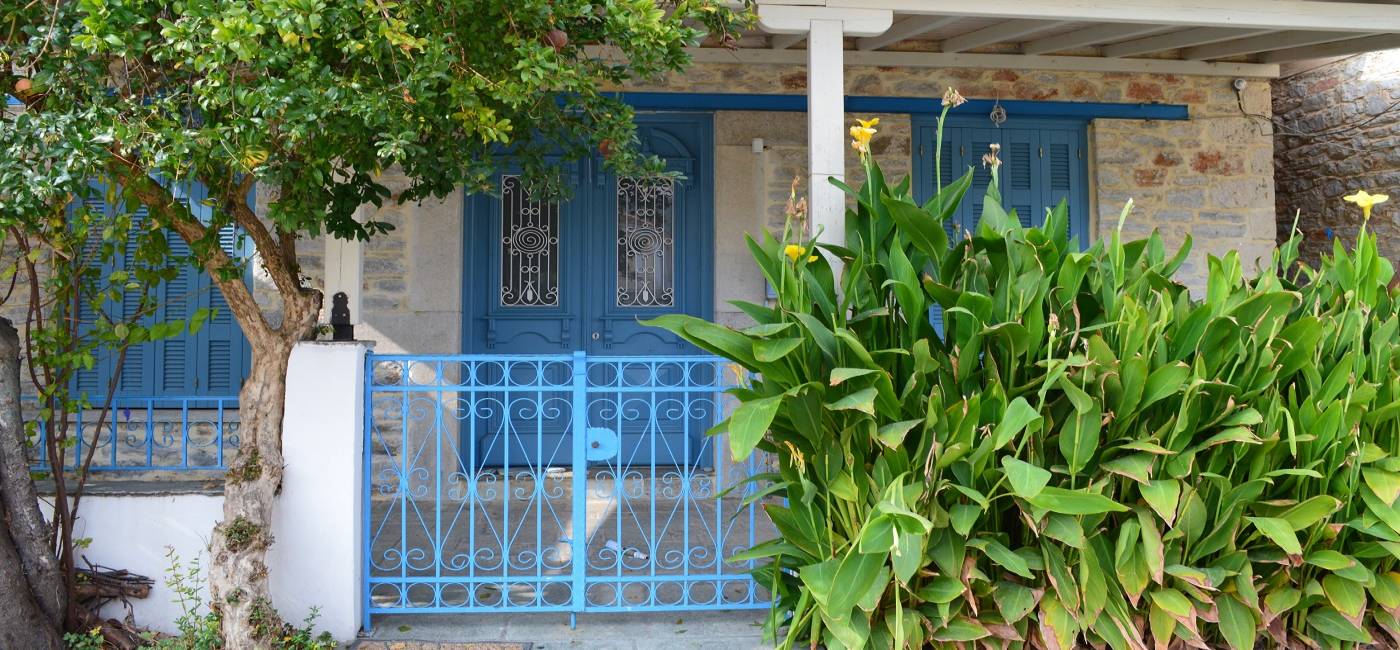Horto - Milina
In south Pelion, wooden window shutters are painted blue. This is how the villagers proclaim their close ties to the sea. Indeed, at Horto and Milina many houses belong to families of ship owners or ship builders, and the region in general, has a long nautical tradition.
In antiquity, the area was known as Olizon, a town with two harbors, one in the Pagasitikos Bay where today Milina is (Valtoudi), and one in the Aegean sea (Hondri Ammos). Olizon was the hometown of Philoktitis about whom Sophocles wrote one of his best tragedies.
When the Venetians occupied several parts of Greece (13th – 17th centuries AD), the harbor of Milina became a destination for their commercial ships. The green lush landscape, rolling hills and hospitable waters must have impressed the Venetians who named the region “hortus” meaning garden or paradise in Latin. This name lasted till today. The modern village of Horto, just like paradise, means something different for everybody: serenity, spectacular sunsets, water sports, delightful evenings at the Horton Cultural Foundation.
Horto is the favorite Pelion destination among British tourists. It is their own spot on the mountain which they happily share with Boris Johnson who has been vacationing in south Pelion for years. Leda Village Resort occupying an area of 7 acres dominates the tiny village, but the resort blends in perfectly with the landscape and the Pelion style architecture.
Milina remains to this day a sailors village. At Valtoudi, fishing, sailing, and motor boats scatter across the seascape. During the summer months, several boats leave Valtoudi to tour the island of Skiathos, east Pelion or north Euboea. Ιn winter, Milina goes back to being a quiet fishing village.
The nearby island of Alatas appears to the eyes of the traveler sometimes as a peninsula and other times as an islet or an isthmus, making the landscape in south Pelion serene and complex at the same time. The Forty Saints Byzantine monastery is currenty the only structure on this magical island.
Alatas has been the subject of a heated debate the last few years. A big pending investment for the construction of a luxury hotel on the island with a capacity of 950 beds has caused distress to the villagers and lovers of Mt Pelion alike. If the investment receives a permit from the Greek authorities, south Pelion will develop into a first class vacation destination in Greece with several economic benefits for the locals. The landscape, however, will change for ever. It is for this reason that most people react. Indeed, from the three little houses that were built centuries ago on the nearby Tzasteni beach to the massive modern structures that will house almost a thousand people on Alatas, the difference in scale is almost inconceivable. Without any doubt, we ought to think about it seriously before any final decision is made.




